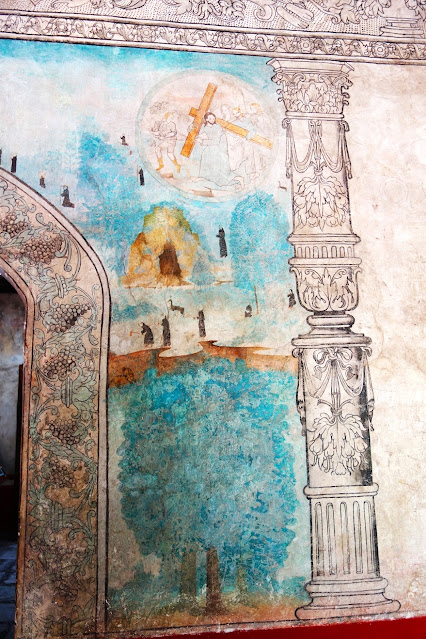Yesterday I went to yet another one of Mexico City's many museums. And unlike the radio museum I wrote about a couple days ago, this one was definitely worth visiting.
Looking at Google Maps for new places to visit, I came upon the ex-convent of Culhuacán, which is now a museum. Culhaucán is a neighborhood with ancient, pre-Hispanic roots. It is located in the borough of Iztapalapa. Iztapalapa is not the safest part of the city, but there is a Metro stop just a couple blocks away from the convent along a major avenue, so I figured I would be OK. I walked from my apartment about a half hour down Insurgentes Avenue to the subway stop on Line 12. That line took me right to Culhuacán station.
Culhuacán may be a gritty, unattractive neighborhood, but it is very historic. For centuries it was a separate town sitting on the shore of Lake Texcoco, the lake which once covered much of the valley where Mexico City stands today.
This painting shows what the Valley of Mexico looked like in Aztec times. The arrow points to Tenochtitlan, the island capital of the Aztecs, which today is Mexico City's historic center.
On the lake shores there were many other cities, with names that are familiar to anyone who knows Mexico City. Chapultepec, Coyoacán, and Xochimilco were once separate towns that are now part of sprawling Mexico City. The arrow points to the location of Culhuacán.
This sign says that Culhuacán, the place of the Culhua tribe, is one of the oldest cities in the Mexico Basin.
However, this plaque, just a few steps away, was placed in 2010 to commemorate the 1340th anniversary of Culhuacán's founding in A.D. 670. It says that Culhaucán is THE oldest city in Anáhuac (the Aztec name for the Valley of Mexico).
After the Spanish conquest, Culhuacán remained an important town, and Augustinian friars chose this place as the center for their evangelization of the natives. In 1560 they established the monastery of St. John the Evangelist. It is one of the very few remaining buildings in Mexico City from the 16th century. The monastery included the Seminary of Indigenous Languages where the monks learned the native languages, and the natives, in turn, were taught Spanish.
The museum contains several rooms where pre-Hispanic and colonial artifacts are on display.
Large quantities of pottery from Teotihuacan have been found by archaeologists at Culhuacán, suggesting that the later was linked to that great metropolis that flourished more than one thousand years ago.
After the decline and eventual abandonment of Teotihuacan, Culhuacán became an autonomous jurisdiction. From around A.D. 800 it was ruled by a dynasty of chiefs who extended the city's control over the southern part of the valley. However, by the early 1400s, Culhuacán was conquered by the Aztecs.
























No comments:
Post a Comment